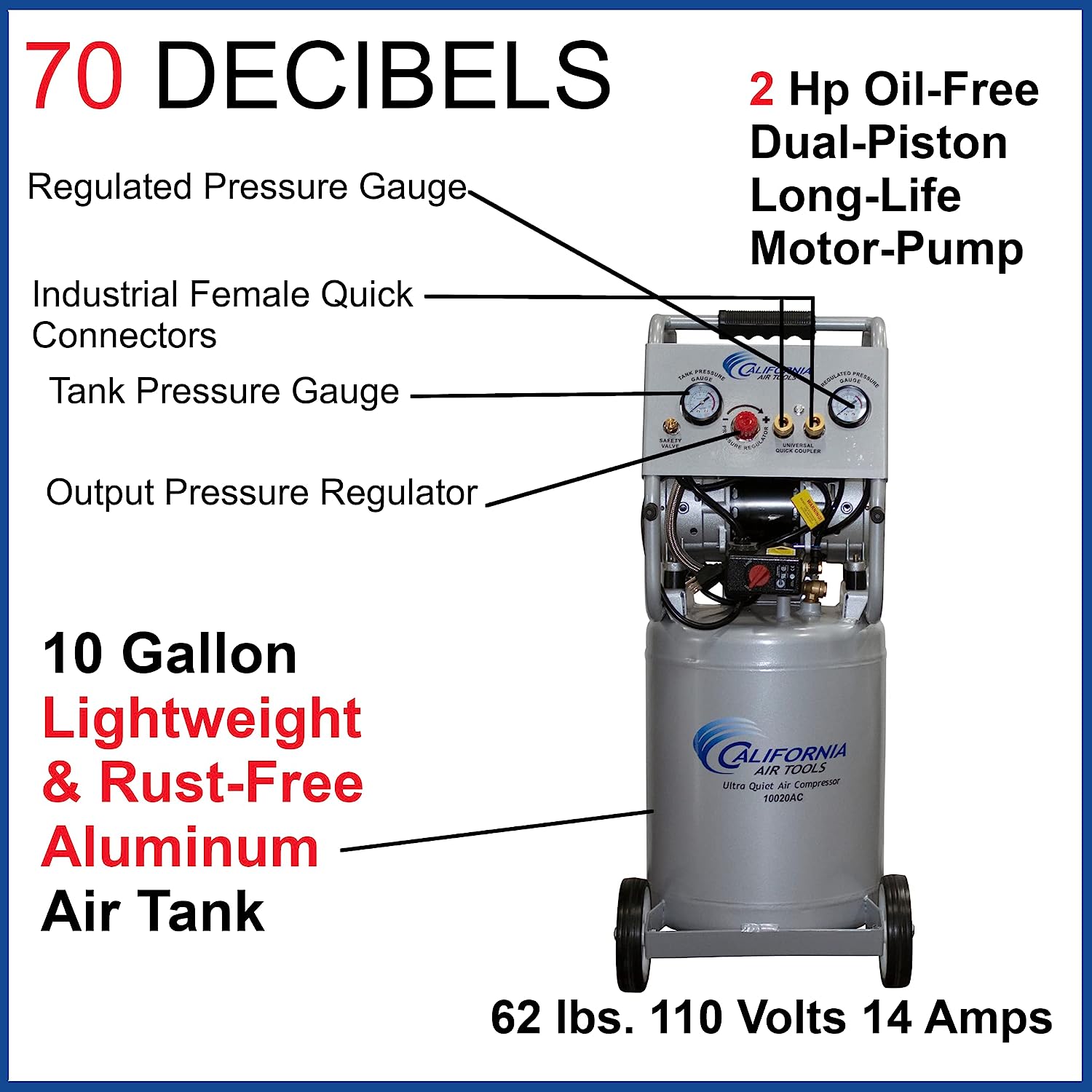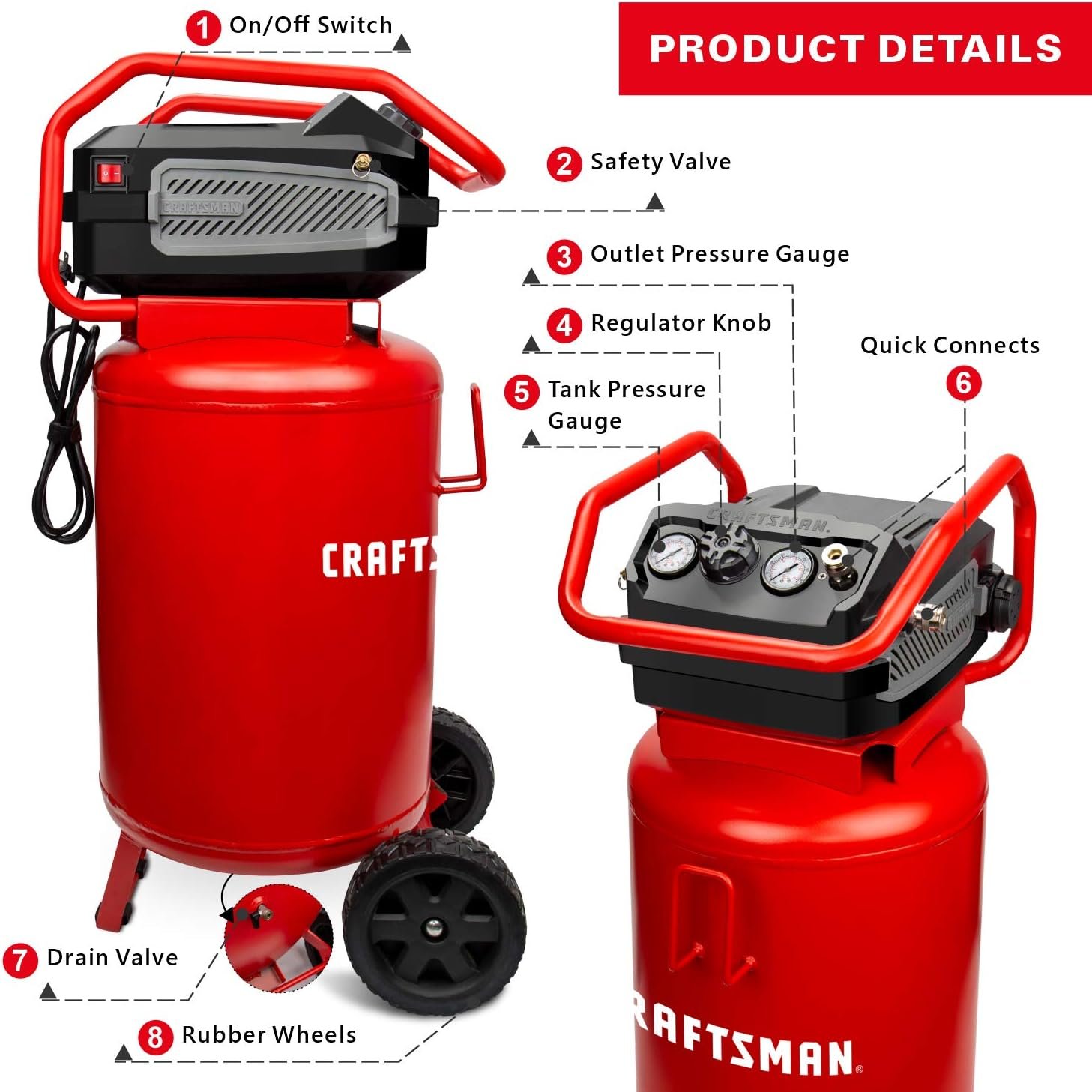If you’ve ever wondered about the possibility of harnessing the sun’s energy to power a practical everyday device like an air compressor, you’re in for a treat. In this article, we explore the exciting world of powering an air compressor with solar panels. Imagine the convenience and eco-friendliness of having a reliable source of compressed air that runs solely on renewable energy.
Benefits of Powering an Air Compressor with Solar Panels
Reduced Energy Costs
One of the primary benefits of powering an air compressor with solar panels is the reduced energy costs. Traditional air compressors rely on electricity from the grid, which can be expensive and subject to fluctuating prices. By harnessing the power of the sun, you can significantly decrease your energy expenses and protect yourself from rising utility costs.
Environmentally Friendly
Using solar panels to power an air compressor is an environmentally friendly choice. Solar energy is a renewable source of power that does not produce harmful emissions or contribute to climate change.
By reducing your reliance on conventional energy sources, you can reduce your carbon footprint and help create a cleaner and greener future.
Energy Independence
Another advantage of using solar panels to power your air compressor is achieving energy independence. With a solar-powered system in place, you become less reliant on the electrical grid and its potential failures.
This ensures uninterrupted operation of your air compressor, even during power outages. Additionally, by generating your own energy, you become less susceptible to utility rate increases and can have peace of mind knowing that you have control over your power supply.
Components Required for Solar Powered Air Compressor
Solar Panels
The most critical component of a solar-powered air compressor system is, of course, the solar panels themselves. These panels capture sunlight and convert it into electricity through the photovoltaic (PV) effect. It is important to choose high-quality solar panels with a sufficient wattage rating to meet the power demands of your air compressor.
Charge Controller
A charge controller is necessary to regulate the voltage and current coming from the solar panels to the battery storage. It prevents overcharging and prolongs the lifespan of your batteries.
The charge controller acts as a crucial intermediary between the solar panels and the battery storage, ensuring that the energy flow is optimized and efficient.
Battery Storage
Battery storage is essential for a solar-powered air compressor system as it allows you to store excess energy generated by the solar panels. This stored energy can then be used when the sun is not shining or during peak usage times.
Deep-cycle batteries, such as lead-acid or lithium-ion batteries, are commonly used for solar energy storage due to their ability to withstand frequent charge and discharge cycles.
Inverter
An inverter is required to convert the direct current (DC) electricity generated by the solar panels and stored in the batteries into alternating current (AC) electricity that can power your air compressor. Make sure to select an inverter with the appropriate wattage rating to handle the power requirements of your air compressor.
Air Compressor
Lastly, you will need an air compressor to complete your solar-powered system. Choose an air compressor that is compatible with the voltage and wattage output of your solar panels and batteries.
You may also consider investing in an energy-efficient air compressor to maximize the benefits of your solar-powered setup.
Calculating Solar Panel Requirements
Determining Power Consumption of Air Compressor
To accurately determine the solar panel requirements for your air compressor, you first need to calculate its power consumption. This information can usually be found on the air compressor’s specifications or user manual.
Look for the wattage or kilowatt-hour (kWh) rating to get an idea of the power it consumes during operation.
Sizing Solar Panels
Once you have the power consumption of your air compressor, you can calculate the solar panel requirements. Divide the power consumption (in watts or kilowatts) by the peak sun hours in your location to determine the minimum wattage of solar panels needed.
It is recommended to add a buffer of around 20% to account for any inefficiencies or future expansion.
Consideration of Backup Power
When sizing your solar panels, it is crucial to consider the need for backup power. If your air compressor requires constant operation or backup during cloudy days, you may need additional panels or a larger battery storage capacity to ensure uninterrupted power supply.
Installation Process of Solar Panels for Air Compressor
Assessing the Location
Before installing your solar panels, you need to assess the location for optimal sunlight exposure. Ensure that there are no shading obstacles such as trees or buildings that could reduce the efficiency of your panels.
Ideally, the mounting area should receive maximum sunlight throughout the day for optimal energy production.
Mounting the Solar Panels
Once the location is determined, securely mount the solar panels on a structurally sound surface, such as a roof, ground-mounted rack, or carport.
Follow the manufacturer’s instructions and local building codes to ensure safe and proper installation. It may be helpful to consult a professional solar installer for assistance.
Connecting the Components
After the solar panels are mounted, connect the charge controller, battery storage, inverter, and air compressor according to the system’s wiring diagram. Take necessary precautions when working with electrical connections and consult a licensed electrician if needed. Ensure all connections are secure and follow safety guidelines to prevent accidents and damage to the components.
Proper Maintenance and Care
Regular Cleaning of Solar Panels
To maintain optimal performance, it is essential to regularly clean your solar panels. Dust, dirt, and debris can accumulate on the surface, blocking sunlight and reducing efficiency. Use a soft brush or cloth to gently remove any dirt or grime, and avoid abrasive materials that could scratch the panels. Periodically check for any shading from nearby objects that may have grown since installation.
Monitoring and Troubleshooting
Regular monitoring and troubleshooting of your solar-powered air compressor system is crucial to identify any issues early on. Monitor the energy production of your solar panels, battery charge levels, and inverter operation regularly. Look out for any abnormal readings or fluctuations and address them promptly. If you encounter any technical difficulties, consult the user manual or seek professional help if needed.
Ensuring Battery Efficiency
Batteries are a vital component of your solar-powered air compressor system, and proper care is necessary to maximize their lifespan and efficiency. Follow the manufacturer’s recommendations regarding charging and discharging cycles, and avoid overcharging or deep discharging the batteries. Regularly check the battery connections, terminals, and electrolyte levels if applicable.
Common Challenges and Solutions
Limited Sunlight Hours
In regions with limited sunlight hours or frequent cloudy days, the energy production of solar panels may be affected. To overcome this challenge, consider increasing the number of solar panels or installing a larger battery storage capacity to store excess energy for use during periods of low sunlight.
Inefficient Battery Storage
If your battery storage is not providing sufficient power to run your air compressor, consider upgrading to higher-capacity batteries or optimizing their charging and discharging cycles. This can help ensure adequate energy supply and resolve any efficiency issues.
Incompatibility Issues
When combining different components for your solar-powered air compressor system, compatibility is crucial. Ensure that the solar panels, charge controller, batteries, inverter, and air compressor are compatible with each other in terms of voltage, capacity, and power requirements. Check the manufacturer’s specifications and consult professionals if needed.
Overheating of Compressor
Operating an air compressor for extended periods can generate heat, which may affect its performance or even cause damage. To prevent overheating, ensure proper ventilation and cooling for the compressor. Consider installing additional fan systems or selecting air compressors specifically designed for solar-powered applications.
Cost Considerations
Initial Investment
The initial cost of installing a solar-powered air compressor system may be higher compared to traditional grid-powered options. It includes expenses such as solar panels, batteries, inverters, and installation labor. However, the cost of solar panels has decreased significantly in recent years, making solar-powered systems more accessible and cost-effective.
Long-term Savings
Although the upfront investment may be higher, the long-term savings of powering your air compressor with solar panels are substantial. By generating your own energy, you can reduce or eliminate monthly electricity bills and protect yourself from rising utility costs. Over time, the savings can offset the initial investment and provide a significant return on investment.
Return on Investment
The return on investment (ROI) for a solar-powered air compressor system depends on various factors, including the cost of electricity, system efficiency, and the lifespan of the components. In general, solar-powered systems have relatively short payback periods, allowing you to recoup your investment and start enjoying the financial benefits of energy independence.
Government Incentives
To promote the adoption of renewable energy, governments often offer incentives, grants, and tax credits for solar-powered systems. Research the available incentives in your region, as they can significantly reduce the overall cost of installing a solar-powered air compressor system and further enhance the return on investment.
Case Studies of Successful Solar-Powered Air Compressor
Industrial Applications
Numerous industrial applications have successfully incorporated solar-powered air compressors into their operations. Industries such as manufacturing, agriculture, and construction can benefit from the increased energy efficiency, reduced operating costs, and environmental sustainability offered by solar-powered systems.
Residential Applications
In residential settings, solar-powered air compressors find applications in various tasks such as powering pneumatic tools, inflating tires, or even running small home workshops. Homeowners can enjoy the convenience, cost savings, and ecological advantages of a solar-powered setup while reducing their reliance on the electrical grid.
Future Trends in Solar-Powered Air Compressor
Advancements in Solar Panel Technology
As solar technology continues to advance, we can expect more efficient and cost-effective solar panels. Innovations such as higher conversion efficiency, flexible panels, and improved durability will further enhance the feasibility and performance of solar-powered air compressor systems.
Integration with Smart Grid Systems
The integration of solar-powered air compressor systems with smart grid systems is an emerging trend. This integration allows for enhanced control, monitoring, and optimization of energy usage. Smart grid systems can intelligently manage the flow of energy between the solar-powered system, the electrical grid, and other connected devices, leading to increased efficiency and better utilization of resources.
Conclusion
Powering an air compressor with solar panels offers numerous benefits, including reduced energy costs, environmental friendliness, and energy independence.
By understanding the components required, calculating solar panel requirements, and following the installation process, you can successfully set up a solar-powered air compressor system. Proper maintenance, addressing common challenges, and considering the cost aspects contribute to a sustainable and cost-effective solution.
With future advancements and integration with smart grid systems, solar-powered air compressors have a promising future in various industrial and residential applications. Embracing solar energy not only benefits you economically but also contributes to a greener and more sustainable planet.
Joey has over 15 years of experience in the air compressor industry. As a senior test manager at Pneumatic Performance Labs, he oversees all testing and evaluation of air compressors. Known for his technical expertise and leadership, Joey has built a strong team of engineers who provide trusted third-party testing capabilities to air compressor companies nationwide.










